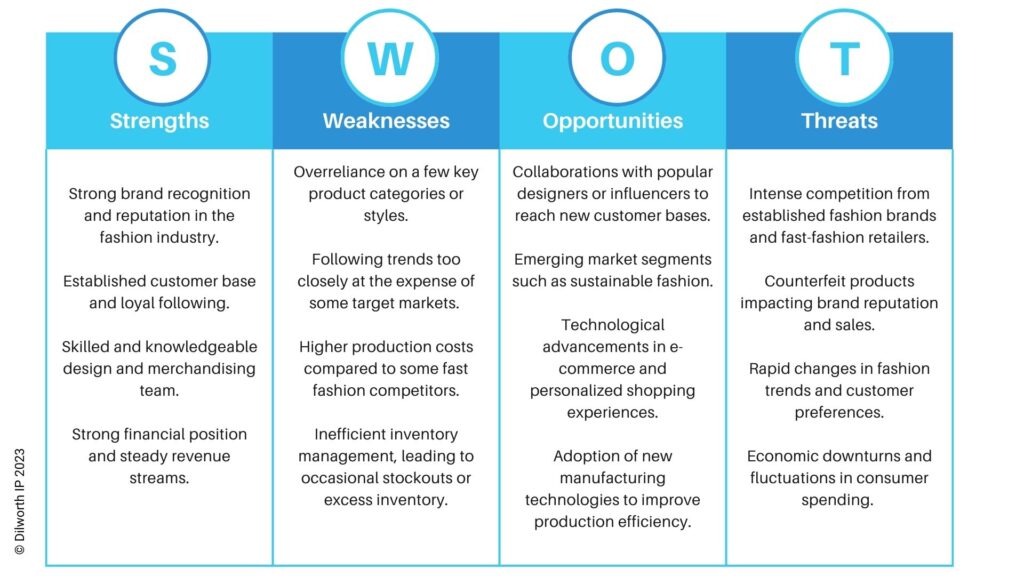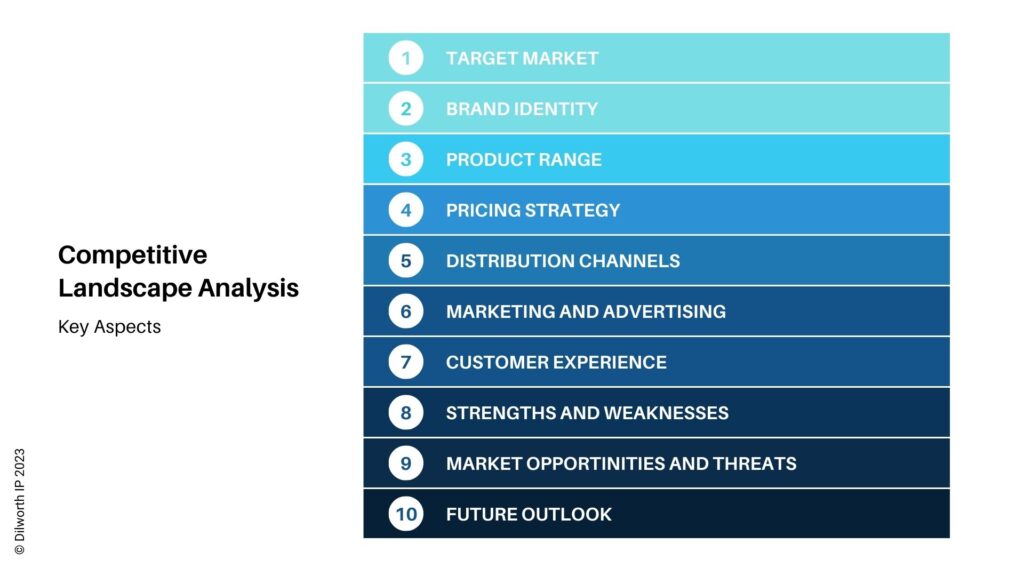Critical Considerations When Developing Your Brand Protection Strategy: Conducting A Thorough Risk Assessment
Jul 20th, 2023 by Dilworth IP | Recent News & Articles |
This is the second article in the series on developing a dynamic brand protection strategy.
In my previous post, I touched briefly on the importance of conducting a risk assessment as part of your brand protection strategy. Let’s dig deeper now and discuss the different ways to get started on conducting a risk assessment and how they apply to your business.
SWOT Analysis
SWOT stands for Strengths, Weaknesses, Opportunities, and Threats. The beauty of the SWOT analysis is that it includes information that is internal to the company, as well as external forces that may be uncontrollable. When conducting a SWOT analysis, ask the following questions in each category:
- Strengths: What are you doing well? What good qualities set you apart from your competition?
- Weaknesses: What do others do better than you? Where can you improve?
- Opportunities: What are your goals? Has your market shifted to create new demands?
- Threats: What factors are outside of your control? How have they negatively affected the business?
Let’s take the example of a fictional retail clothing company. Keep in mind, the SWOT analysis is applicable across industries. The graphic below illustrates how our retail company might answer these questions.
Competitive Landscape
While a SWOT analysis is performed introspectively, a competitive landscape analysis looks outside of the business to glean more insight into what competitors are doing and how they are doing it. It involves the ongoing process of identifying, researching, and evaluating competitors in order to inform your own business and branding strategy.
In performing a competitive landscape analysis for our retail clothing brand example, they’ll need to evaluate several key aspects of their competitors’ strategies and offerings.
As the graphic above illustrates, the key aspects of a competitive landscape analysis include:
-
Target Market
- What is the target audience of each competitor? How do they position themselves in the market? Do they cater to a niche or a broader market segment?
-
Brand Identity
- What are the brand image and values of each competitor? What are the emotions and perceptions they evoke in customers? Does this match their values?
-
Product Range
- Continuing our example of a retail clothing company, what kind of clothing and apparel is offered by their competitors? Consider the variety, quality, and pricing of their products. Is there a specific focus, such as casual wear, formal attire, athleisure, or sustainable fashion?
-
Pricing Strategy
- What are the pricing strategies employed by your competitors? Do they position themselves as a luxury brand, mid-range, or budget-friendly? Does their pricing match the quality and value offered?
-
Distribution Channels
- What distribution channels are used by your competitors? Do they have physical stores, e-commerce platforms, or both? Assess the user experience and convenience they offer in terms of ordering, delivery, and returns.
-
Marketing and Advertising
- What are the marketing and advertising tactics used by your competitors? Looking at their online presence, social media engagement, influencer partnerships, and advertising campaigns, evaluate their messaging, storytelling, and customer engagement strategies.
-
Customer Experience
- What is the overall customer experience provided by your competitors? Look at their customer service, returns policy, loyalty programs, and online/offline shopping experience. Do they have any other unique offerings?
-
Strengths and Weaknesses
- What are the strengths and weaknesses of each competitor? What sets them apart? Where might they have shortcomings? Consider innovation, customer loyalty, brand reputation, and operational efficiency.
-
Market Opportunities and Threats
- Identify any emerging market trends, consumer preferences, or industry challenges that may impact your competitors. How do they adapt to these changes? What are their vulnerabilities?
-
Future Outlook
- Based on your analysis, what are the future prospects of your competitors? Consider their growth potential, expansion plans, and any upcoming product launches or collaborations. How might they evolve and compete in the future?
Some of the key aspects of competitive analysis should sound familiar! Notice that the competitive landscape analysis also includes components of SWOT. While you are doing your own company SWOT analysis, you should also be thinking of how your competitors fare in those same SWOT categories, creating a “mini” landscape analysis as you go along.
Conclusion
A SWOT analysis and Competitive Landscape analysis can give you further insight into your own company and vision, as well as your competitors. Both of these tools together give a well-rounded view of where the business and industry stand, and potential predictions for the future. Whether this is the company’s first SWOT or Competitive Landscape, or one of many in the history of the business, it is recommended to work with a brand protection strategy professional to get the most out of the process.
Stay tuned for our next post in this series to learn who on your team should be part of developing a brand protection strategy, and why it is important to know who your stakeholders are.
This article is for informational purposes, is not intended to constitute legal advice, and may be considered advertising under applicable state laws. The opinions expressed in this article are those of the author only and are not necessarily shared by Dilworth IP, its other attorneys, agents, or staff, or its clients.



